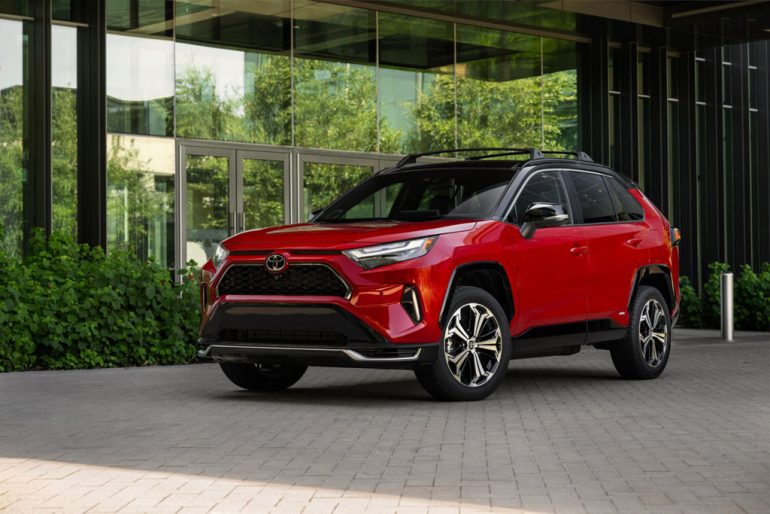
Toyota has always been a leader in the electrification game, with hybrid and plug-in hybrid models paving the way toward sustainable driving. In a move that’s causing a buzz in the automotive world, the automaker has decided to drop the “Prime” nameplate from its plug-in hybrid (PHEV) models for the 2025 Toyota Prius and RAV4. This change is about more than just a label—it’s part of Toyota’s larger strategy to streamline its branding and align with global markets like Europe and Japan. So, what does this shift mean for consumers, and how do these models stack up against their predecessors?
For years, the “Prime” label has been synonymous with Toyota’s top-tier plug-in hybrid offerings. First introduced in the Prius lineup back in 2016, followed by the RAV4 in 2019, it became a symbol of advanced hybrid technology. But for 2025, the company is taking a different approach, opting for the more straightforward “PHEV” or “Plug-in Hybrid” naming convention.
Also, don’t forget that you can get discounted new car pricing with a free quote through qualified local dealer partners.
This change is more than just a rebranding exercise; it’s designed to make it easier for consumers to differentiate between various powertrains. With the growing adoption of hybrids, plug-in hybrids, and electric vehicles (EVs), Toyota aims to simplify the buying process, especially for customers who might be overwhelmed by technical jargon.

In addition to dropping the Prime name, Toyota is phasing out the familiar blue oval emblem that has long signified its eco-friendly models. Starting with the 2024 model year and continuing into 2025, the blue emblem will be replaced by a simple blue dot, subtly placed on the trunk or tailgate. This marks a visual shift, signaling that Toyota is evolving its design language to reflect modern sensibilities while retaining its green DNA.
While the name may have changed, the core of these plug-in hybrids remains largely the same. Let’s dive into the specs of these models:
2025 Toyota Prius PHEV
The 2025 Prius PHEV continues to impress with a 2.0-liter engine paired with a single electric motor, producing a combined 220 horsepower. This setup provides a quick 0-60 mph sprint of just 6.6 seconds—more than enough for daily driving with a touch of excitement. The electric-only range reaches up to 44 miles on a full charge, making it perfect for short commutes. Even in hybrid mode, the Prius remains a fuel-efficient choice with a combined 52 mpg, maintaining its reputation as an eco-conscious ride.
2025 Toyota RAV4 PHEV
The RAV4 PHEV, on the other hand, is designed for those who need more power and all-wheel-drive capability. Its 2.5-liter engine, working alongside two electric motors, delivers a total of 302 horsepower. With an electric range of 42 miles and a combined fuel economy of 38 mpg, it strikes a balance between performance and efficiency. While slightly more expensive—at $43,865, up $425 from the previous model—the RAV4 PHEV continues to offer solid value for those seeking a greener SUV option.

One thing to note: the 2025 Toyota RAV4 PHEV will arrive in limited quantities starting in late 2024. So if you’re in the market for this plug-in SUV, you might want to act quickly. Toyota has not yet announced the pricing for the 2025 Prius PHEV, but the 2024 model started at $32,975, making it a more accessible option for those looking to go green on a budget.
Toyota’s decision to drop the “Prime” badge isn’t just a branding tweak—it’s a move that reflects the company’s broader strategy. As automakers continue to ramp up their electrification efforts, simplifying powertrain names and aligning them across global markets helps reduce confusion. Toyota is clearly positioning itself to be more accessible to the mainstream consumer as the industry shifts toward hybrid and fully electric models.
Moreover, this change signals a transition away from specialized names and badges. Toyota is focusing more on the functionality of its powertrains rather than adding layers of branding that may not resonate with newer customers. It’s a subtle but significant move that may influence other automakers to adopt similar strategies.
As the auto industry moves deeper into electrification, Toyota’s choice to drop the “Prime” nameplate signals a shift toward simplicity and practicality. While the models themselves remain largely unchanged, the streamlined naming conventions and updated badges help clarify the brand’s lineup for a wider audience. The RAV4 and Prius PHEVs will continue to offer the same reliable performance and efficiency, just without the extra flair of the “Prime” label.
So, whether you’re a long-time fan of Toyota’s hybrids or new to the plug-in game, the 2025 models offer plenty to get excited about—just with a more straightforward name attached.